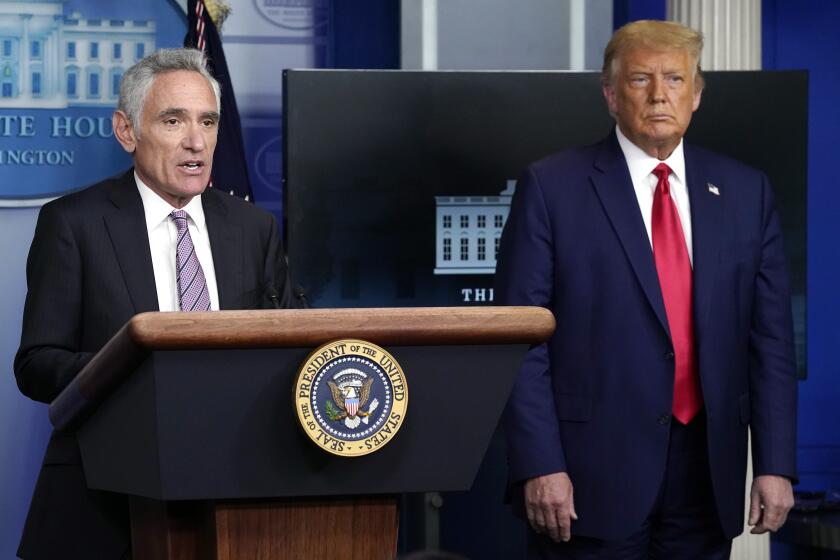Microloan program is a big help for some small businesses
Like many small businesses caught in the worst economic crisis since the Great Depression, Tri-State Biodiesel was struggling to find capital last year, in the middle of a credit crunch.
The Bronx company, which converts used cooking oil from restaurants around New York City into fuel that it then sells, was in dire need of an equipment upgrade.
“Banks weren’t lending at all,” said Brent Baker, founder and chief executive.
Baker said he went to three major commercial banks that had financed the company in the past. “Once the crisis hit, applications were suddenly more complicated and lengthy, and they all came back giving us all these euphemisms for ‘no.’”
In the end, Baker got a $50,000, three-year loan at a reasonable rate from Boc Capital, a lender that received $750,000 in federal stimulus funds last year to help small businesses such as Tri-State Biodiesel.
“The loan increased our profitability and put us in a position where we could expand,” Baker said, adding that his company hired 10 workers. “It shows how a relatively small amount of credit can be such a huge advantage, and we really did create jobs.”
When President Obama signed the American Recovery and Reinvestment Act into law in February 2009 to create jobs and promote spending, the law included $56.1 million for microloans to small businesses, to be doled out through the Small Business Administration through September.
While some critics complain about the government’s economic stimulus efforts, some lenders and borrowers say the stimulus money for small businesses is working.
Targeted toward startup, newly established or growing small businesses, the microloans are short-term loans up to $35,000 each for working capital or inventory and equipment purchases. The intermediary lenders who distribute the loans can choose to lend more than that limit.
The idea of microlending is more typically associated with loans of as little as $25 to poor people in developing countries to help them generate their own income to climb out of poverty.
But more recently, microcredit has become a mainstream practice in the U.S., and even though the average SBA microloan is $13,000, the SBA program has a mission similar to traditional microloan programs.
“While the microloan program is open to all entrepreneurs, the program especially supports underserved markets,” said Pravina Raghavan, director of the SBA’s New York district office.
This includes borrowers with little or no credit history, low-income borrowers, and female and minority entrepreneurs who generally don’t qualify for conventional loans or larger SBA-guaranteed loans, Raghavan said.
SBA microloans are disbursed through specially designated nonprofit intermediary lenders across the country — a list of which can be found on the SBA website — that pay the SBA interest of about 1%.
The intermediaries can pool funds to lend as much as $50,000, and interest rates for the small-business borrowers, which are usually no more than 10%, are individually negotiated with the intermediary lenders.
“We were ready to expand our lending, and the stimulus enabled the next round of lending to come in, and at a much lower interest rate that’s near zero,” said Nancy Carin, executive director of Boc Capital, one of 20 intermediaries servicing the New York area.
For Boc Capital, the stimulus doubled the microlender’s capital base while interest rates for the loans are as much as 5 percentage points lower. At the same time, demand rose, Carin said.
“We’ve been seeing some borrowers that in the past would’ve gotten financing through traditional banks,” she said. “Even successful businesses would see their sales fall by 30%, and so they’d come to us.”
Banks were also in trouble after the crisis, adding to small-business owners’ woes. In 2008, FDIC-insured banks endured losses of $12.4 billion, compared with profits of $101.6 billion a year earlier, as 26 banks failed. An additional 152 banks failed in 2009.
As their balance sheets deteriorated, banks became more wary of risk. They tightened credit lines and started refusing to make smaller, riskier loans.
As a result, Accion USA, a national microlender that also distributes SBA funding, has seen a 20% increase in applicants nationwide this year from 2009, said Gina Harman, chief executive of Accion.
Nationwide, since the stimulus act was signed, the average monthly total of microloans has grown to $3.1 million, up from $2.5 million in 2008, said the SBA’s Raghavan. SBA intermediaries made 2,717 loans in 2009. In the New York City area alone, the SBA’s lending volume increased by 70% in a year.
Even with the dramatic rise in loans, microlenders such as Accion and Boc said they have kept repayment rates above 90%. Similarly, delinquency rates for the SBA microloan program have steadily fallen from 5.37% in 2007 to 4.73% this year.
Lee writes for MarketWatch.com/McClatchy.
More to Read
Inside the business of entertainment
The Wide Shot brings you news, analysis and insights on everything from streaming wars to production — and what it all means for the future.
You may occasionally receive promotional content from the Los Angeles Times.










